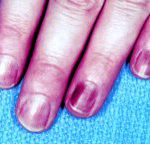How far we have come! It’s now commonplace to intubate trauma patients in the ED using rapid sequence induction followed by orotracheal tube placement. However, 20 years ago we were still gnashing our teeth about safety.
In 1991, the group at UMDNJ Newark looked at 100 consecutive trauma patients with suspected head injury who were paralyzed and intubated in the ED. Half of the intubations were performed by a surgeon, the other half by an anesthesiologist. Fifty seven patients were intubated orally and 40 nasally(!). Three required cricothyroidotomy after failure to intubate due to facial fractures.
The majority of these patients had head scans performed; 59% were positive and 15 required emergent neurosurgical procedures. No patients were found to have a neurologic deficit from the intubation even though seven were eventually found to have cervical spine injuries. Only one patient developed an aspiration pneumonia.
The authors concluded that paralysis and intubation in the ED was safe. It helped facilitate the diagnostic workup because they could control combative patients. Up to that time, the only alternative was heavy sedation, which carried its own risks.
Interesting points on how far we have advanced:
- Intubation in the ED did not used to be routine. There was a great deal of anxiety before this procedure
- Nasal intubation was still fairly commonplace
- The cricothyroidotomy rate was high
- Intubation was usually performed by a surgeon or anesthesiologist

